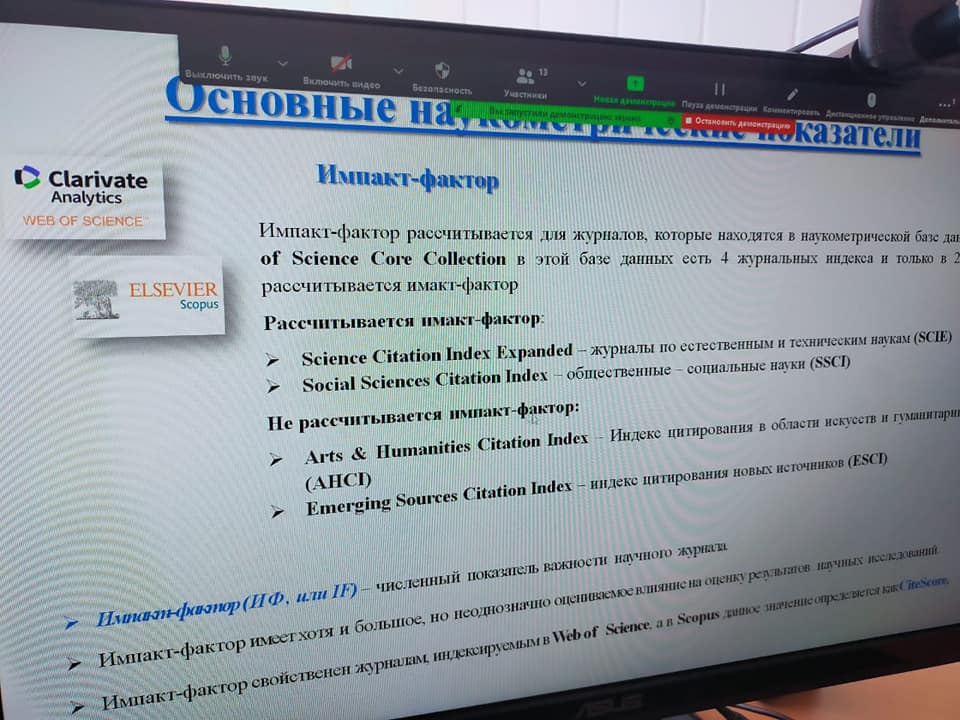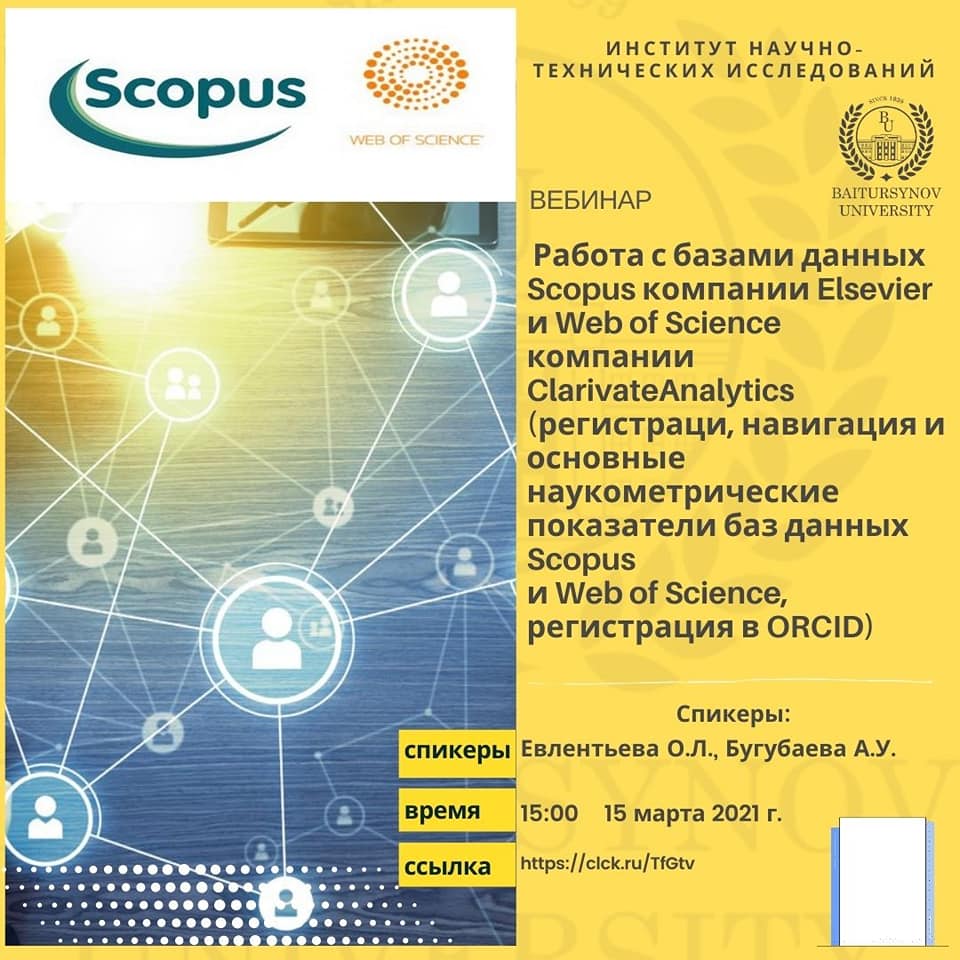How to find scientific information in English-language databases? This and much more was discussed at the webinar. As you know, today the Ministry of Education and Science of the Republic of Kazakhstan imposes new requirements on teachers-scientists for publication activity, participation in grant funding projects, participation in international projects, etc.
One of these points is the mandatory presence of Scopus Author ID, WoS Researcher ID, ORCID ID, the presence of h-Hirsch, publications in high-ranking journals that have quartiles in the WoS database - Q1, Q2, Q3, in the Scopus CiteScore database, percentile %, etc. In connection with this, the Institute of Scientific and Technical Research of the A. Baitursynov KRU has developed a schedule of webinars for the teaching staff. One of the first webinars on the English-language resources of Web of Science by Clarivate Analytics and Scopus by Elsevier was held for employees of the Institute of Engineering and Technology, as well as for everyone on the topic "Registration, navigation and main scientometric indicators of the Web of Science and Scopus databases". In today's realities, a university teacher is not only a "Lesson-giver", but first of all he is a research scientist who conducts active scientific activities, increases his scientific potential, participates in various grant projects, publishes articles in English-language databases, passes on his scientific experience to undergraduates and doctoral students, etc.
The task of INTI is to train the teaching staff of the university to independently navigate and work in English-language databases, search for relevant articles and journals in their profile, as well as track scientometric indicators of journals and the author's profile in English-language resources (article citation rates, the presence of h-Hirsch, etc.).
The speakers were Aliya Bugubayeva, Candidate of Agricultural Sciences, Associate Professor, Deputy Director of the Institute of Scientific and Technical Research, and Oksana Evlentyeva, Chief Specialist of INTI. Similar webinars will be held in the near future for employees of all institutes.

